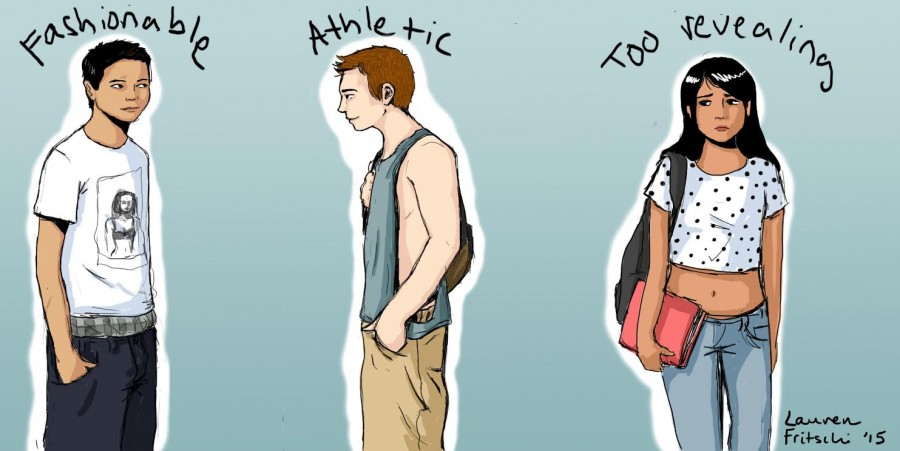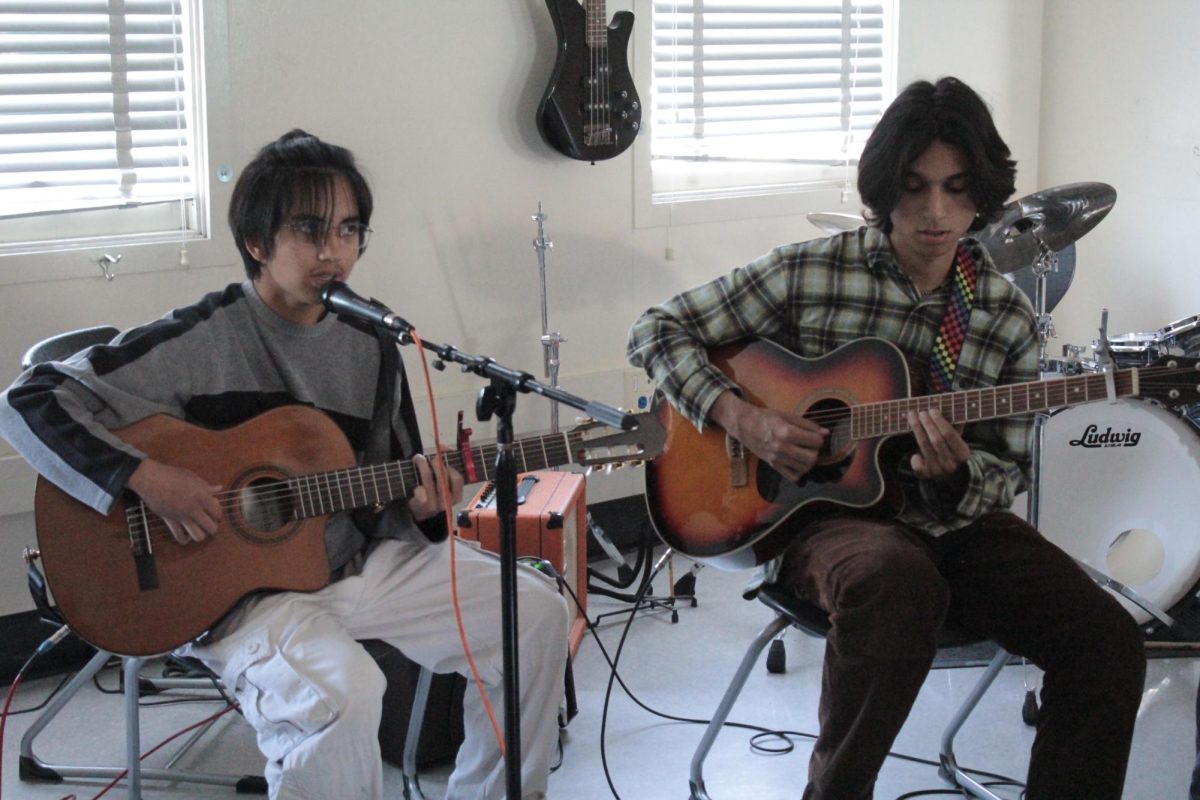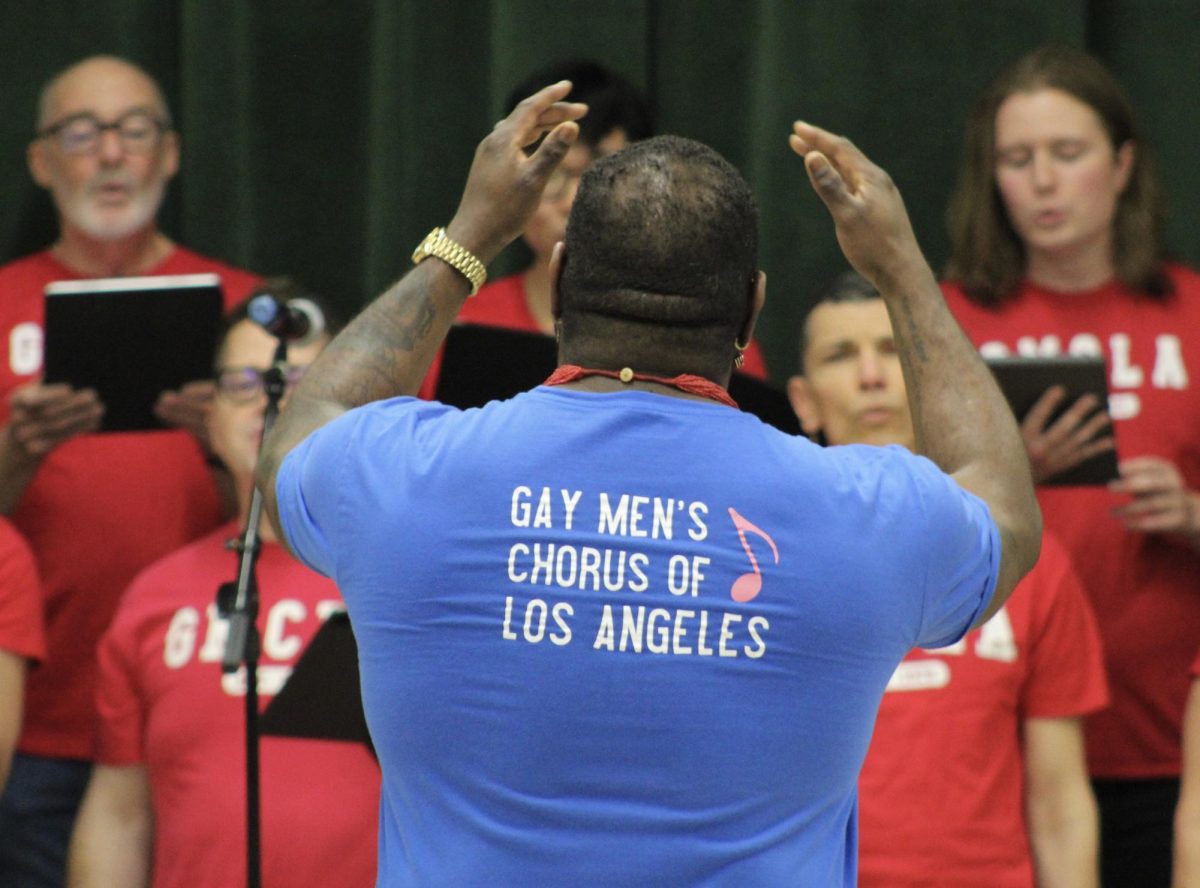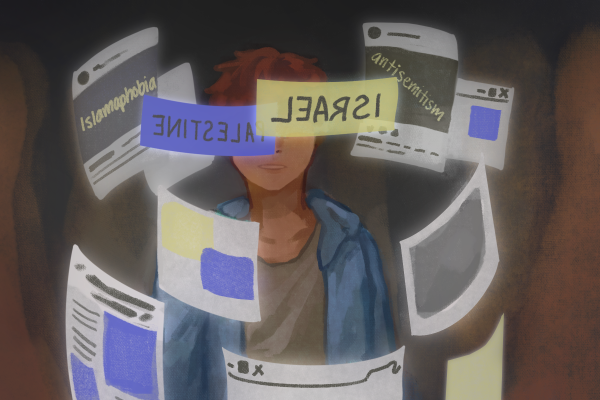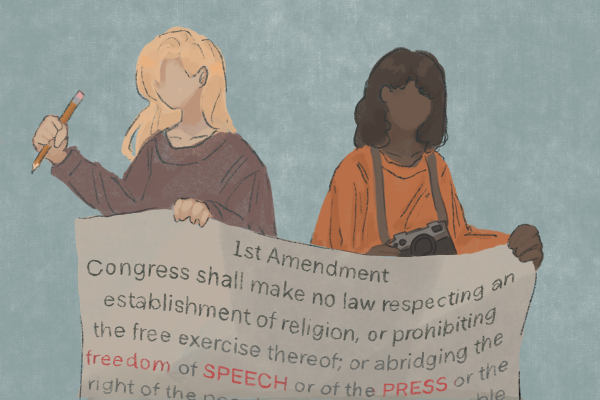Dress code between genders starts to seem unfair
November 20, 2015
Dress codes are in place in all schools to ensure students’ safety and well being. However, it’s beginning to seem that boys are being given more leeway with what they choose to wear while girls are being held to different standards.
Dress codes are put into place in schools in order to prevent gang activity, to promote safety and to avoid distractions in the school environment.
According to the Los Angeles Unified School District Parent/Student Handbook, “school dress code and uniform policies must be made to where they are consistent with the First Amendment of the United States and Section 2 of Article 1 of the California Constitution.”
Throughout the handbook provided by the district, there are very specific guidelines as to a student’s attire: They shouldn’t wear anything that prevents the participation of a student in any school activity, creates a health or safety hazard, or that causes an actual distraction or disturbance in any school activity. In essence, the district wants students to look presentable.
“It sets a tone that if I wear this, I am in ‘school mode,” Magnet Coordinator Nicole Bootel said.
By the end of this section, it states that “Consistent with the above guidelines, hair, sideburns, mustaches, and beards may be worn at any length or style, and clothing may be of any fashion, style, or design, as determined by the student and his parents.”
If a student isn’t breaking any of the guidelines provided in the handbook and their parent is okay with what their attire, whatever they decide to wear to express themselves should be acceptable.
Nowhere in the “LAUSD Parent/Student Handbook” does it say that a female student’s skirt or shorts must be a certain length. There are no statements that give a clear indication of whether or not a girl should be able to show her midriff in school.
It’s unfair that schools enforce certain restrictions of what girls are able to wear when they are staying within the guidelines presented in the handbook.
Schools across the district, on the other hand, do want their students to come dressed professionally. This allows for students to become adjusted to how they should dress when going to work in the future.
Even though this does offer an opportunity for students to gain this skill, this standard isn’t held to boys as much as it is to girls.
It is time for girls to have the freedom to wear what they want without being ridiculed and told they can’t wear what they want to because they are showing too much skin.
“I think covering your midsection and your undergarments, and that’s for any gender, should be necessary,” Principal Deb Smith said.
Many of the boys, however, do break the rules and guidelines presented in the “LAUSD Student/ Parent Handbook.” They wear clothing that has offensive images and/or text on it such as drug content and vulgar language, they sag their pants showing much of their underwear, and they wear shirts that has their entire chest shown from the side.
On the other hand, when girls wear a crop top that shows an inch of skin, they are told to cover up and how what they are wearing is indecent and unprofessional.
“Every student should be able to wear what they want to wear, “ said sophomore Ashley Diaz. “It just isn’t fair to see a boy wear a shirt that reveals a lot of the side of his torso not be told a thing while a girl immediately told to cover up her midriff.”
Schools also comply with the same excuse of how a girl’s body is simply too sexual and how boys can’t focus on their school work. It is absolutely absurd to think that a girl who is showing “too much leg” could distract anyone from focusing or doing their work. Dress codes are then made based off of these complaints and comments of boys.
Instead of teaching their students to be respectful toward their female peers, we are the ones who are forced to change what we wear because it’s “our fault.”
It needs to be understood that every student has the right to express themselves and in no way should one gender be held to a different standard than the other just because they are a “girl” or a “boy.”


